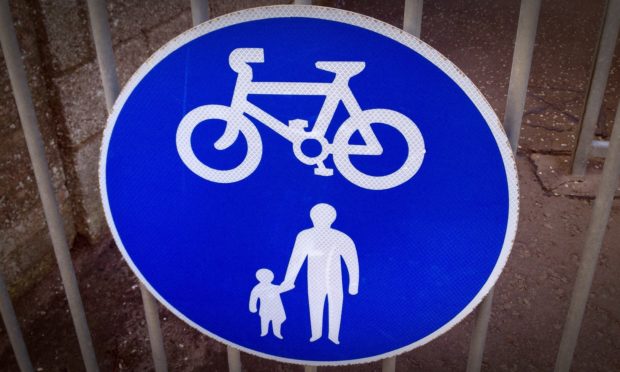An Inverness GP will this week call on politicians to make radical plans to overhaul towns and cities to make them more cycling and walking friendly.
Katie Walter, of the Cairn Medical Practice, will give evidence to an MSPs’ inquiry into doctors prescribing activity and sport as a means of tackling physical and mental illness.
Dr Walter, who is involved in several projects looking at how exercise improves health, believes Scotland is in a position to develop a “ground-breaking” approach to physical activity.
Her proposals have been outlined in a document she has submitted to parliament ahead of her appearance in front of the Holyrood Health Committee.
In her submission, she calls for new laws to ensure that the lay-outs of towns and cities encourage cycling and walking, arguing they currently favour motorists.
Dr Walter also asks the committee to commission a review on the impact of prescribing exercise and how effective it is when it comes to encouraging people to take up sustained physical activity.
She also flags up the “barriers” which can prevent people from exercising including the way towns and cities have evolved.
“Probably the biggest barrier is the environment that we live in that is now so conducive to driving and so off putting for cycling,” Dr Walter writes.
“Cities and towns… have now most of their services and supermarkets on the outsides, rather than near where people live, which is a barrier to walking.
“This is a public health issue that needs political will to reclaim from local councils and their planning department… It is time to entrench that in the laws of how we build our infrastructure. I cannot recommend someone to cycle if the streets or roads near them are not safe for that.”
Dr Walter argues the benefits of exercise makes it an issue for all health professionals and likens it to public health initiatives to stop smoking.
She also warns that the “short-term” nature of funding for local exercise projects is another difficulty doctors face when trying to encourage patients to take more exercise.
Although there are many projects involving physical activity, she argues that there is a lack of co-ordinated evaluation to gather evidence on their effectiveness.
“It feels like the time is ripe to take a ground breaking, Scotland- wide, simplified and workable approach to monitoring and evaluation,” Dr Walters argues.
A Scottish Government spokeswoman said it supported “all efforts” to make Scots more active.
The spokeswoman said: “In 2018 we published our Active Scotland Delivery Plan which aims to cut physical inactivity in adults and teenagers by 15% by 2030.”
